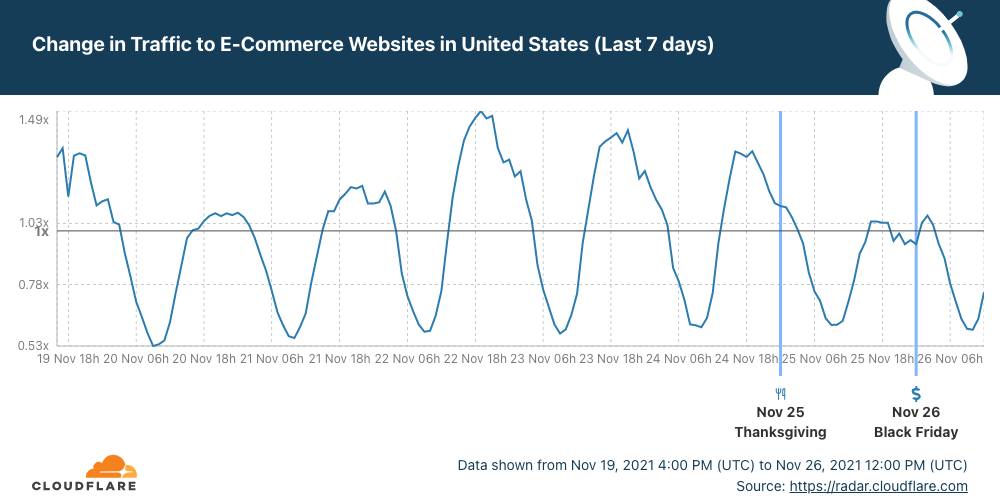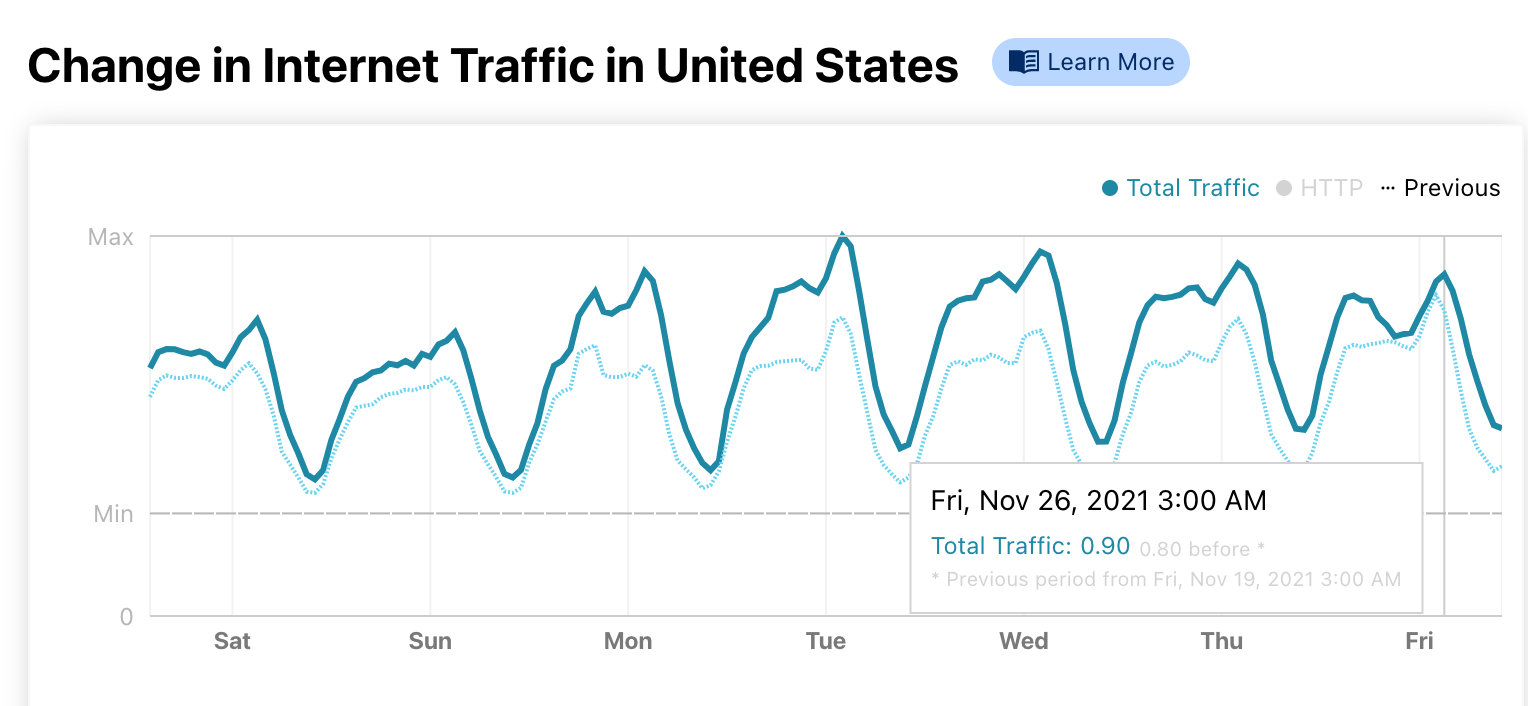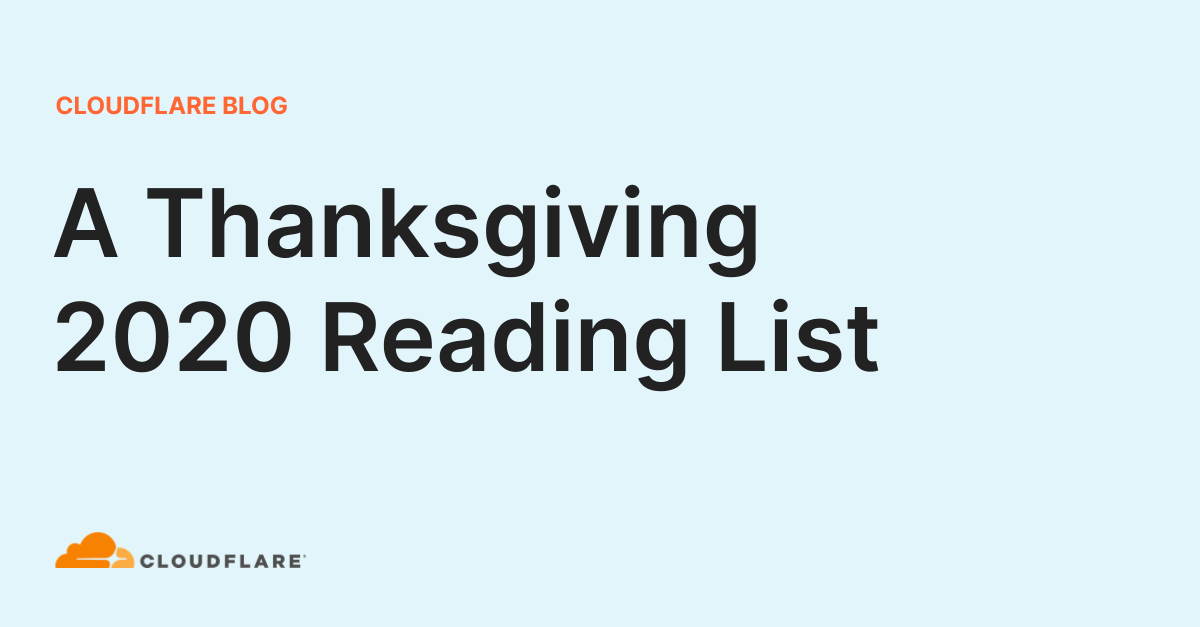Post Syndicated from João Tomé original https://blog.cloudflare.com/an-early-look-at-thanksgiving-2022-internet-trends/
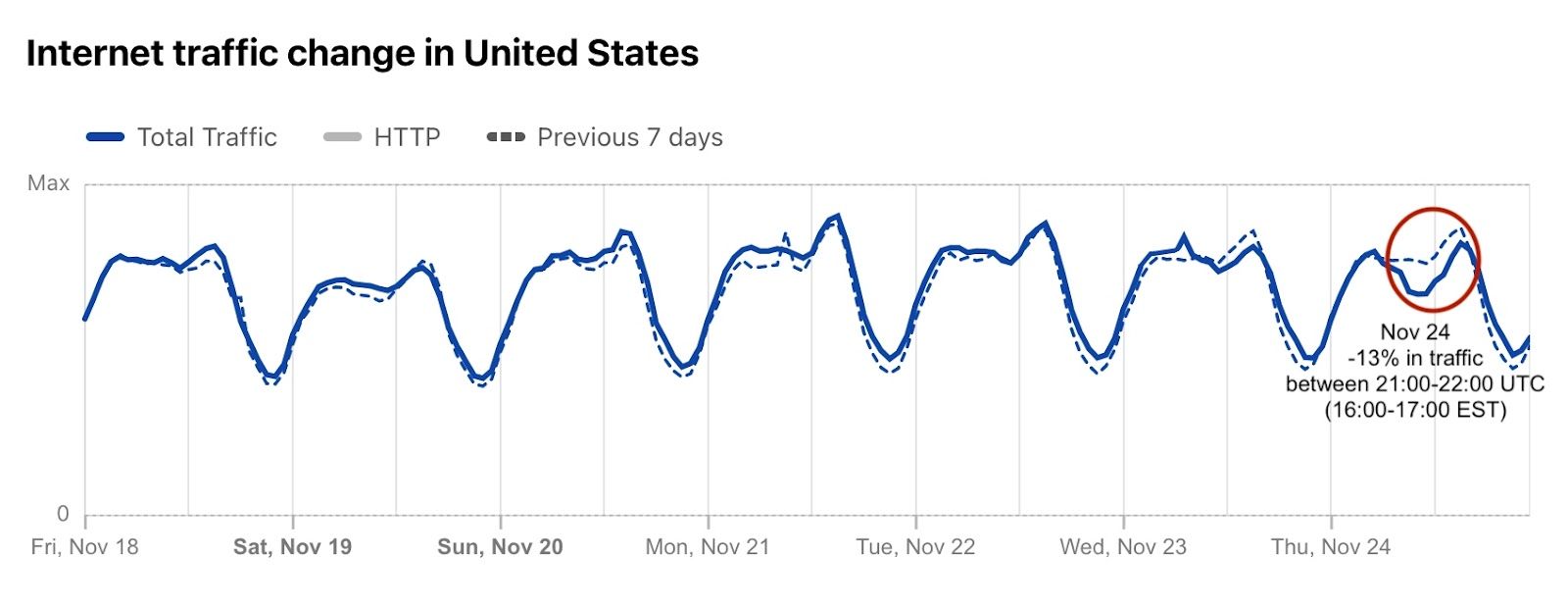
“The more you practice the art of thankfulness, the more you have to be thankful for.”
— Norman Vincent Peale, American author
The turkey. The sweet potatoes. The stuffing. The pumpkin pie. Yesterday, November 24, 2022, was Thanksgiving Day in the US. A time for families and loved ones to be together and thankful, according to the tradition. Last year, we saw how the US paused shopping (and browsing) for Thanksgiving. So, how was it this year? Not only did we see Internet traffic go down (by 13%) during Thanksgiving dinner, but it was much higher than usual the day before and the day after (the Black Friday effect… so far). There was also a clear, but short, Thanksgiving day effect on e-commerce DNS trends.
We’ll have to wait to see what Black Friday looks like.
Let’s start with Internet traffic at the time of Thanksgiving dinner. Although every family is different, a 2018 survey of US consumers showed that for 42% early afternoon (between 13:00 and 15:00 is the preferred time to sit at the table and start to dig in). But 16:00 seems to be the “correct time” — The Atlantic explains why.
That said, Cloudflare Radar shows that between 21:00 and 01:00 UTC (we use that as the standard timezone in Radar) there was a clear drop in Internet traffic, mostly between 21:00 and 22:00 UTC, when traffic dropped 13%, compared with the week before. That time period is “translated” for the East Coast to between 16:00 and 20:00 EST and for the West Coast the time between 13:00 to 17:00 PST. Similar to what we saw last year.
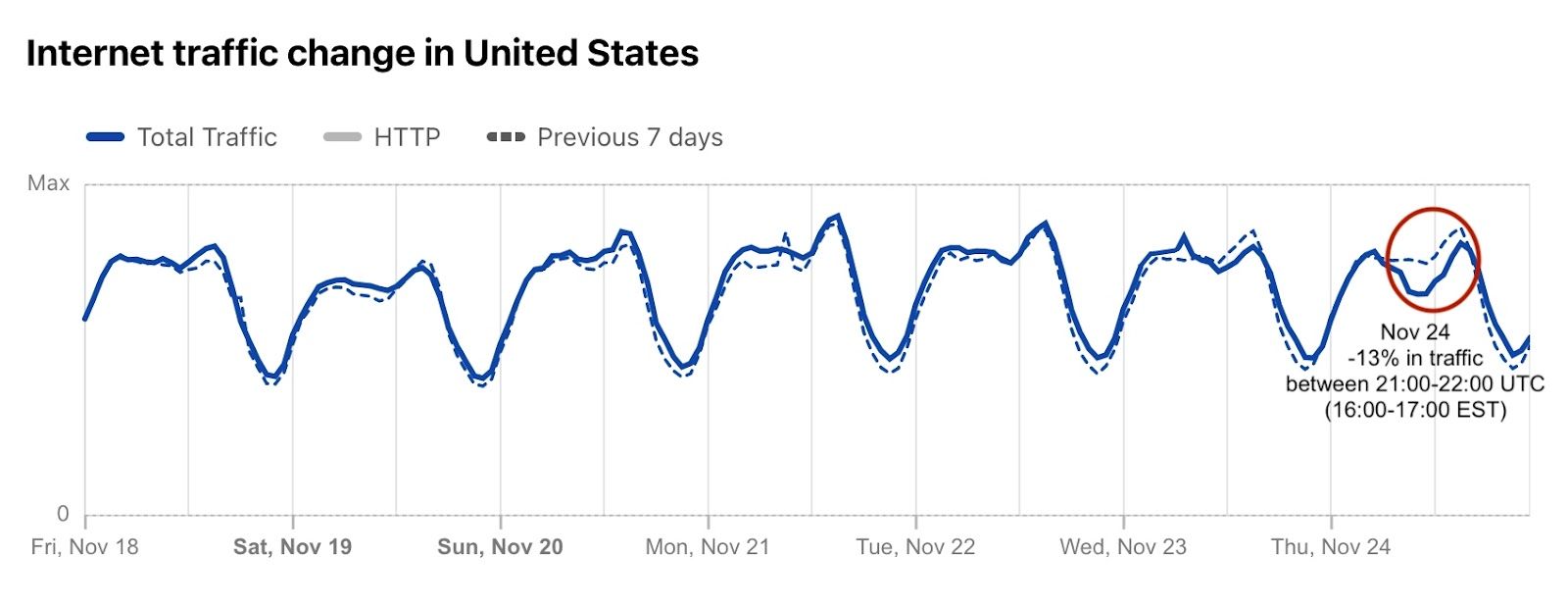
Radar also allows anyone to focus on the last 24 hours and check the traffic volume change compared with the previous period. The more granular view in the next graph shows not only the 13% drop during Thanksgiving dinner, but also the clear increase after. At around 01:00 EST (22:00 PST), traffic was 15% higher than the day before, and today, November 25, Black Friday morning (08:00 EST, 05:00 PST), was growing ~16% more in traffic at 09:00 EST (06:00 PST).

It’s a similar perspective when we look at the last seven days, a filter that also shows the night before Thanksgiving in the US, traffic was 15% higher than the week before at around 01:00-03:00 EST (22:00-00:00 PST). And there’s a general increase in traffic this week, probably related to the fact it is also “Black Friday Week” (more on e-commerce trends at the end).
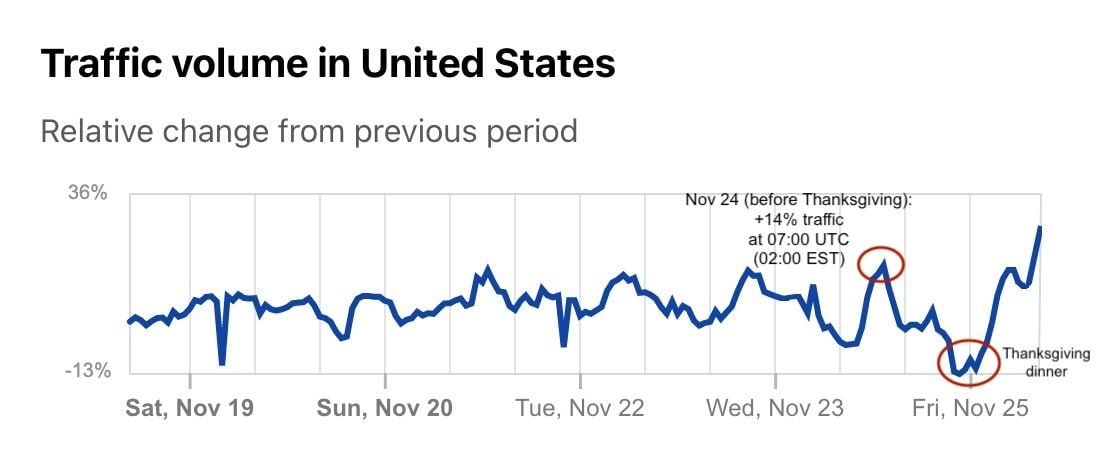
In terms of Internet traffic growth (made by humans, not bots) in November, there’s a clear increase throughout the month, but mostly this week. The next chart aggregates traffic by day. So far, Tuesday, November 22, 2022, was the day of the month with most traffic in the US — +13% than what we saw on Tuesday, November 1.

It’s also clear in the previous graph that weekends in the US have less traffic, especially Saturdays, but that Thanksgiving Day was the one with less traffic of the past two weeks — 10% less traffic than the same day the week before.
We’ve been focused on human Internet traffic. Bots, on the other hand, are not that interested in the Thanksgiving and Black Friday, and there was actually more bot traffic in the US last week than in this one. So far.
To wrap up this Internet traffic section, let’s look at mobile device trends. In the last four weeks, we saw an average of 48% of Internet traffic in the US coming from mobile devices. But on Thanksgiving Day that average was 55%. That was actually the day in November when people in the US were most online using their mobile devices.

Here’s the view that shows the mobile percentage difference from the past two weeks, with an up to 9% increase (compared with the previous week) in mobile devices’ predominance in Internet traffic, between 10:00 and 16:00 EST (07:00-13:00 PST).

E-commerce interest: growing (but with a Thanksgiving dip)
Now, let’s look at DNS query trends (from our globally used 1.1.1.1 DNS resolver) to e-commerce websites in the US. First, the Thanksgiving Day effect.
Aggregating several e-commerce domains, we can see not only that there are several spikes in the last two weeks, but that during Thanksgiving, there was a clear dip in DNS traffic between 15:00 and 17:00 EST (12:00-14:00 PST). How much? At 17:00 EST, Thanksgiving Day, there was 13% less DNS traffic than in the previous week.

We have been following e-commerce trends this week on our Cloudflare Radar Twitter account. And, so far, November 14, 21 and 22, were the days that generated most interest.

Using a smoothed seven day rolling average to those e-commerce domains (only in the US), the growth trend for the past 30 days is even more clear in the past two weeks (after a clear dip in early November). From November 13 to November 22, the rolling average grew ~5%.
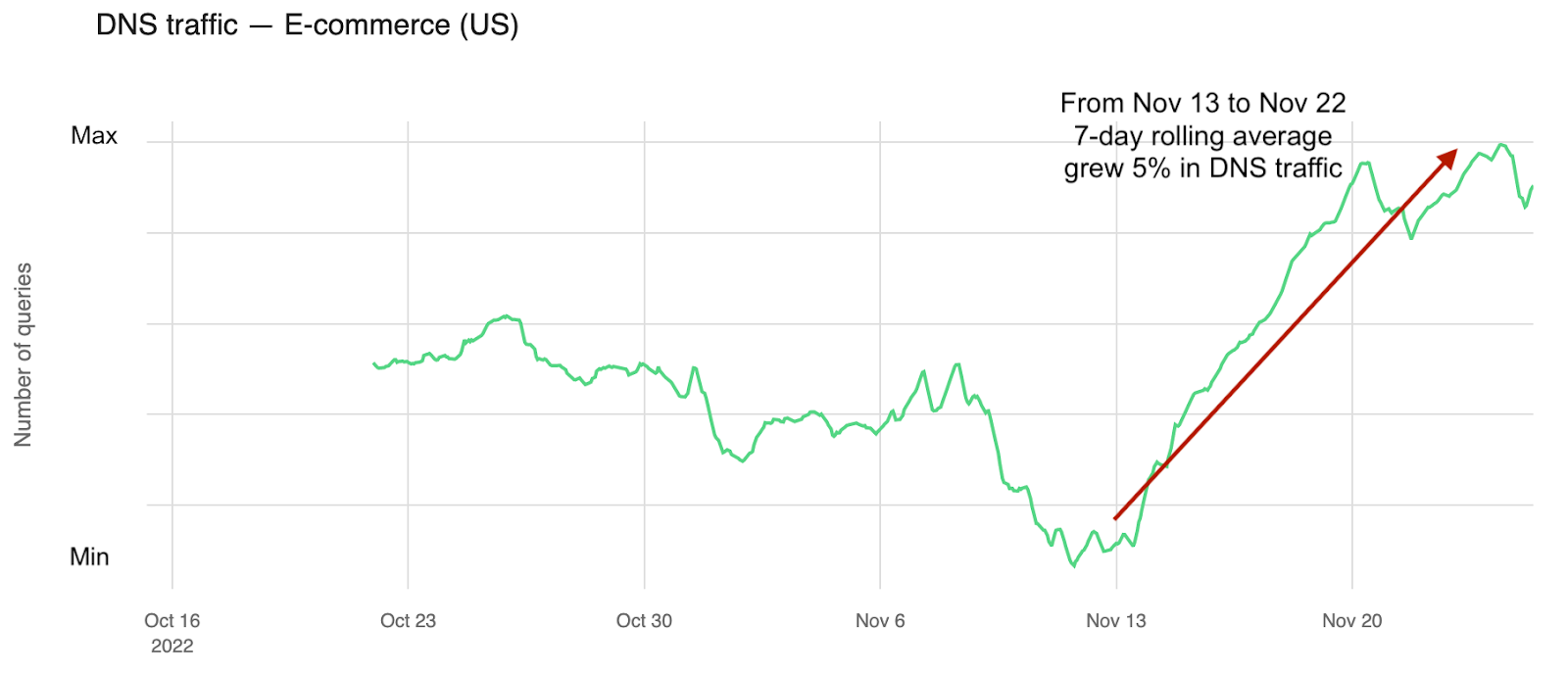
Last year, Cyber Monday was the biggest day for online shopping, in terms of DNS queries that we saw. Next week, we’ll see how it was this year.
Japan: A different kind of Thanksgiving
Also this week, Japan had its Labor Thanksgiving, an annual public holiday that was celebrated on Wednesday, November 23, 2022. And there was also a clear impact, but because, in Japan, this is a day full of events held throughout the country, there was an increase in traffic during the day. How much?
The peak was at around 01:00 UTC (10:00 in local time), when Internet traffic was 60% higher than in the previous week (and it continued to remain high during Labor Thanksgiving Day).
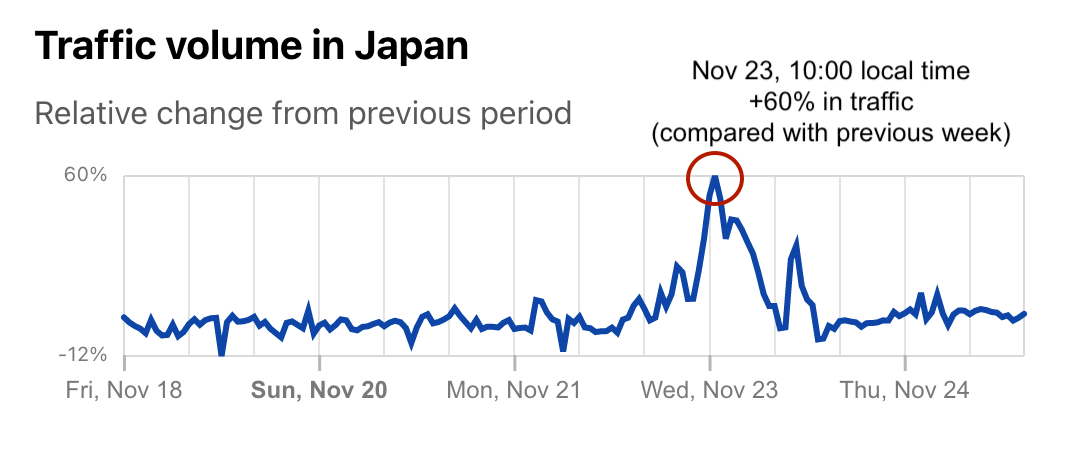
You can check Cloudflare Radar, but also our Twitter account where we continue to see country patterns related to the FIFA World Cup in Qatar (Internet traffic does shift, depending on the country, when national teams are playing), but also e-commerce DNS trends.

